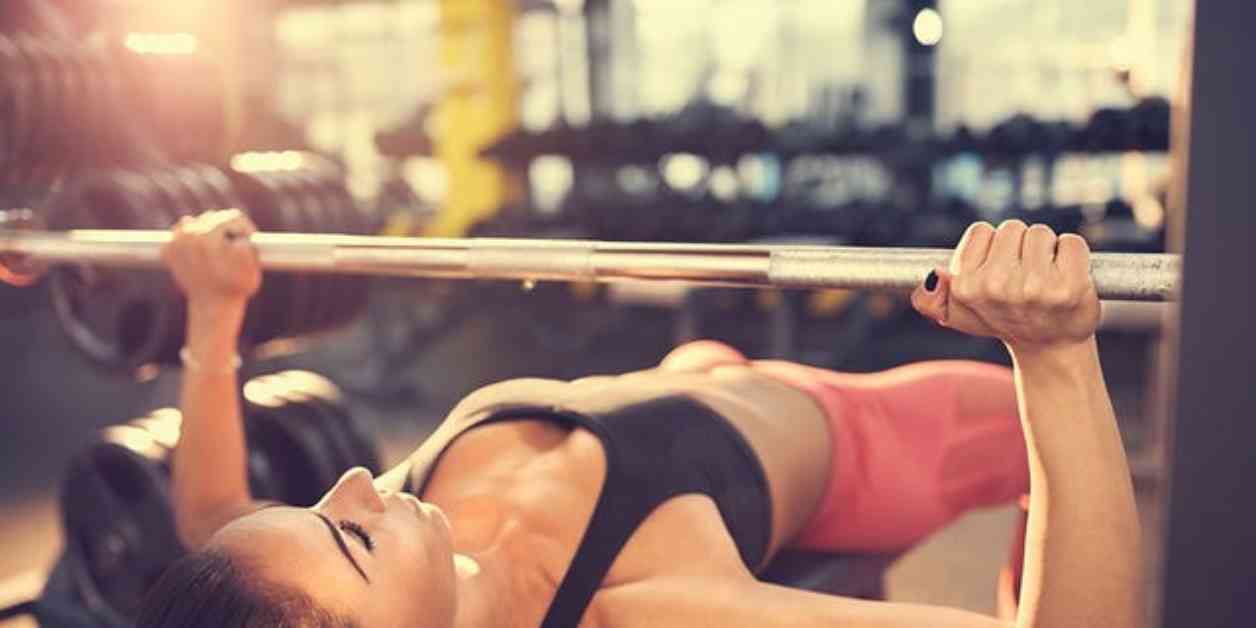The bench press is a staple exercise that has stood the test of time for a reason—it is an excellent way to build upper body strength, especially for beginners in the world of weightlifting. This classic exercise primarily targets the chest muscles, shoulders, and triceps, helping to improve your ability to push, lift, and carry everyday items like heavy grocery bags or pushing a stroller. Nellie Barnett, a certified personal trainer and founder of Nellbells Fitness, emphasizes that the bench press is not only one of the best overall upper body and core strengtheners but also serves as a great foundation for many other movements and activities, such as pushups and chaturangas in yoga class.
The key to mastering the bench press lies in proper form. To help you execute this fundamental weightlifting move correctly, we have broken it down step-by-step below. Jacqueline Kasen, a certified personal trainer and senior director of group fitness at Anatomy, also shares her expertise on the subject.
### How to Bench Press Without a Bench or Barbell
**1. Lie on the floor face-up with knees bent and feet planted flat on the floor.
2. Holding a dumbbell in each hand, press weights up toward the ceiling and extend arms directly above shoulders, palms facing toes.
3. Slowly bend elbows, lowering weights out to the side until elbows form 90-degree angles. Your upper arms may tap the floor in the bottom position.
4. Drive dumbbells back up to starting position. That’s 1 rep.**
Form tips from Barnett include the importance of opening the chest and pulling the shoulder blades down your back to fully engage the upper-body muscles. Other key points to remember during the exercise are to keep your wrists straight and aligned with your forearms and ensure that your feet remain planted and do not lift off the ground.
### Benefits Of The Bench Press
The bench press is more than just a showy exercise—it is highly effective for building upper body strength. In addition to strength gains, this exercise enhances shoulder and core stability, improving overall control in the upper body. As a fundamental movement in weightlifting, the bench press sets the stage for mastering other free weight exercises. As you become more comfortable with the bench press, you will likely notice an increase in confidence with free weights.
### How To Integrate The Bench Press In A Workout
Bench presses can be seamlessly integrated into your upper-body workout days, push days, or full-body strength routines. The frequency at which you perform the bench press depends on your fitness goals. Barnett suggests that everyone should incorporate some form of chest presses, whether done on a bench or on the floor.
One of the greatest aspects of the bench press is its versatility. It can be done with a barbell, dumbbells, or even resistance bands, making it accessible whether you are at the gym or working out at home. Starting with lighter dumbbells and higher reps while focusing on proper form is crucial. As you progress, you can increase the weight and lower the reps to challenge yourself further.
### How heavy should weights be for bench pressing?
For beginners, starting with 5-pound or 10-pound dumbbells is a good way to get comfortable with the bench press movement. Women, in particular, may be surprised by their upper body strength once they become accustomed to the exercise. Jacqueline Kasen recommends using 10 to 20 pounds per hand for dumbbell bench presses as a starting point. If you can easily do more than 12 reps without feeling challenged, the weight might be too light. Choose a weight that feels heavy enough to make the last few reps difficult while still maintaining proper form.
### Is it better to bench press with a barbell or dumbbells?
Barbells and dumbbells each have their own set of benefits, depending on your goals, preferences, and available equipment. For beginners, using dumbbells for bench presses is the safest option. Dumbbells allow you to determine the right weight for you comfortably and protect your shoulder joints, which is crucial when starting out. As you gain strength and confidence, you may choose to transition to using a barbell for heavier lifts.
### Bench Press Variations
There are several ways to progress in bench pressing, according to Barnett. Starting with pushups and TRX pushups can help you build a foundation before moving on to dumbbell bench presses. As you become more comfortable with the exercise, you can incorporate different variations to challenge yourself further. Here are three variations to try in your next workout:
**1. Alternating Dumbbell Floor Press**
**2. Dumbbell Close Grip Chest Press**
**3. Single-Arm Dumbbell Floor Press**
Each variation offers unique benefits, from increased stabilization to focused muscle engagement. Incorporating these variations into your routine can help prevent strength imbalances and enhance overall stability and muscle balance. Experiment with different variations to keep your workouts engaging and effective.
In conclusion, mastering the bench press without a bench or barbell is achievable with the right technique and dedication. By incorporating this classic exercise into your routine and exploring various variations, you can strengthen your upper body, improve stability, and enhance your overall fitness level. Remember to start with lighter weights and focus on proper form to maximize the benefits of the bench press. Whether you are a beginner or a seasoned lifter, the bench press remains a valuable addition to any strength training regimen.

















